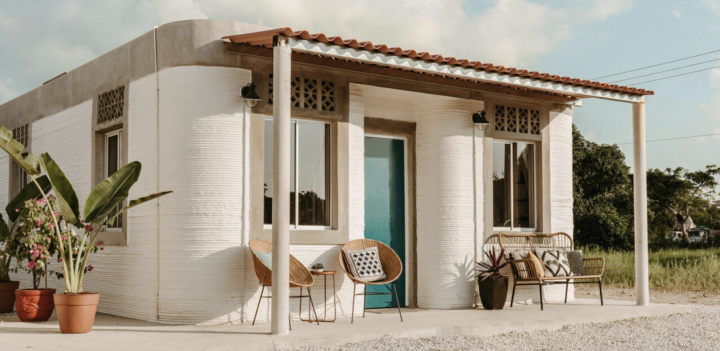Came across an article in Fast Company about how New Story is building an entire 3D-printed community in Tabasco, Mexico. The 2-bedroom, 500-square-foot units create housing for those who previously lived in shacks—and each one takes a mere “several days” to build.
It’s not clear who’s paying for these—and how the cost savings break down (or are offset by higher materials costs and operational costs). But this is an extraordinary advancement in technology, and proof positive of the value of 3D printing.
This is the future. But, as intersectionality has taken over critical theory, one must ask how this will function in a world where so many problems with construction are to be solved. One nightmare: its carbon footprint. I suspect the use of concrete creates a significantly higher carbon output per square foot built than traditional stick-frame construction.
It is imperative that 3D-printed concrete companies find ways to fight the climate crisis, creating sustainable, low-carbon housing that requires none of the awful emissions of the past. Companies must create future material blends with carbon-negative materials—perhaps Solidia‘s carbon dioxide sequestration system that creates synthetic limestone from captured power plant emissions and turns it into cement. Ideally, one produced with clean energy. (Perhaps the very recently announced cyanobacteria-based moldable concrete, which self-heals and sequesters carbon actively, would be an option once commercialized.)
Carbon transformation work like Solidia’s vision has other important advocates—such as Lisa Dyson at Kiverdi, who’s putting her energy into making edible protein with CO2-hungry microbes that NASA developed for the space program. (They ate the CO2 that astronauts breathed out, producing food—an elegantly balanced closed chemical loop.) It is an entire future industry that’s just about to get started, and we need to maximize its impact immediately to fight the climate crisis.
